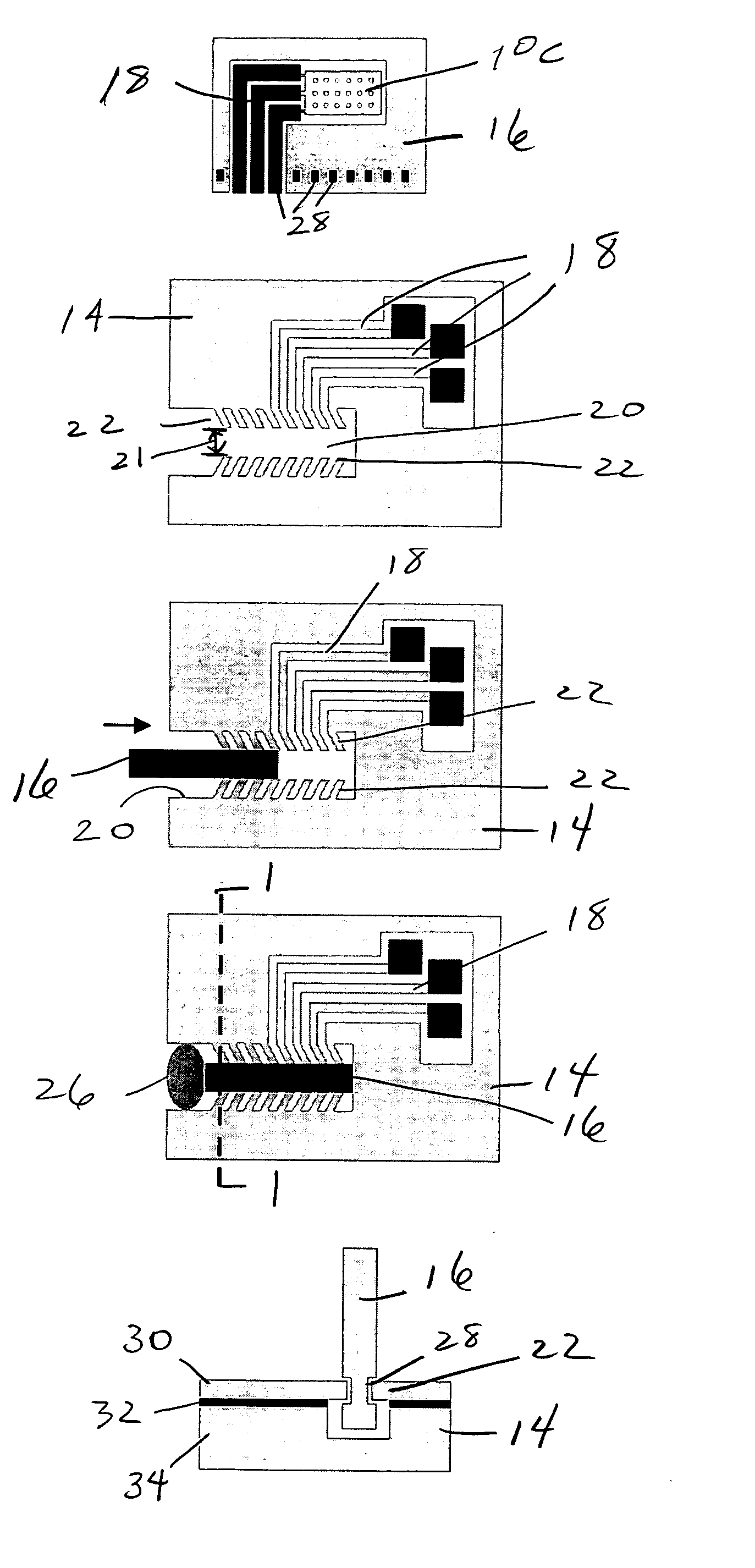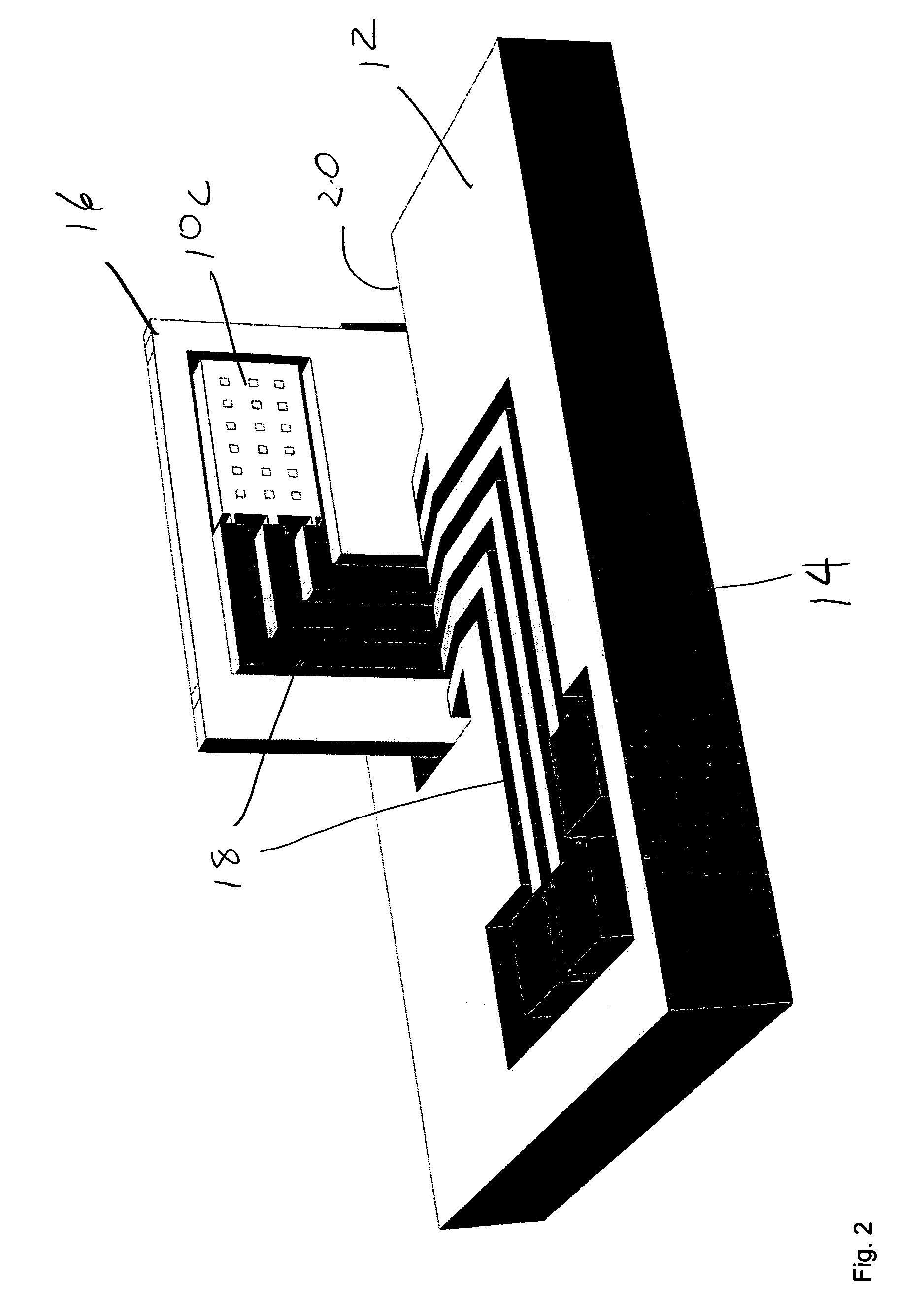Assembly process for out-of-plane MEMS and three-axis sensors
a three-axis sensor and out-of-plane technology, applied in the direction of microstructural device assembly, acceleration measurement using interia forces, instruments, etc., can solve the problems of difficult to obtain macro-scale assembly, difficult to perfectly align the three different sensors perpendicularly, etc., and achieve the effect of more robust structur
- Summary
- Abstract
- Description
- Claims
- Application Information
AI Technical Summary
Benefits of technology
Problems solved by technology
Method used
Image
Examples
Embodiment Construction
[0031] A method for assembling three-dimensional micromachined sensors or passive or active MEMS devices is disclosed. By etching a cavity 20 in silicon-on-insulator (SOI) wafers 14 and placing a second chip or wafer 16 vertically in the cavity 20, a three-dimensional structure can be constructed. In this specification the terms “wafer”, “chip” or “substrate” shall be interchangeably used as equivalents of each other. In addition to allowing for out-of-plane components on a wafer 16, this process enables post-fabrication assembly of three-axis sensors 24 as described below. Electrical conductors 18 can be provided on both the out-of-plane wafer 16 and the holder wafer 14 and coupled together with the assembly process.
[0032] To provide stable mounting, an SOI wafer 14 with a very thick device layer is preferably used (on the order of 100-500 μm). Alternatively, the cavity 20 can be defined in a handle layer of an SOI wafer 14. In some cases additional wafer bonding (e.g. Si-to-Si fu...
PUM
 Login to View More
Login to View More Abstract
Description
Claims
Application Information
 Login to View More
Login to View More - R&D
- Intellectual Property
- Life Sciences
- Materials
- Tech Scout
- Unparalleled Data Quality
- Higher Quality Content
- 60% Fewer Hallucinations
Browse by: Latest US Patents, China's latest patents, Technical Efficacy Thesaurus, Application Domain, Technology Topic, Popular Technical Reports.
© 2025 PatSnap. All rights reserved.Legal|Privacy policy|Modern Slavery Act Transparency Statement|Sitemap|About US| Contact US: help@patsnap.com



